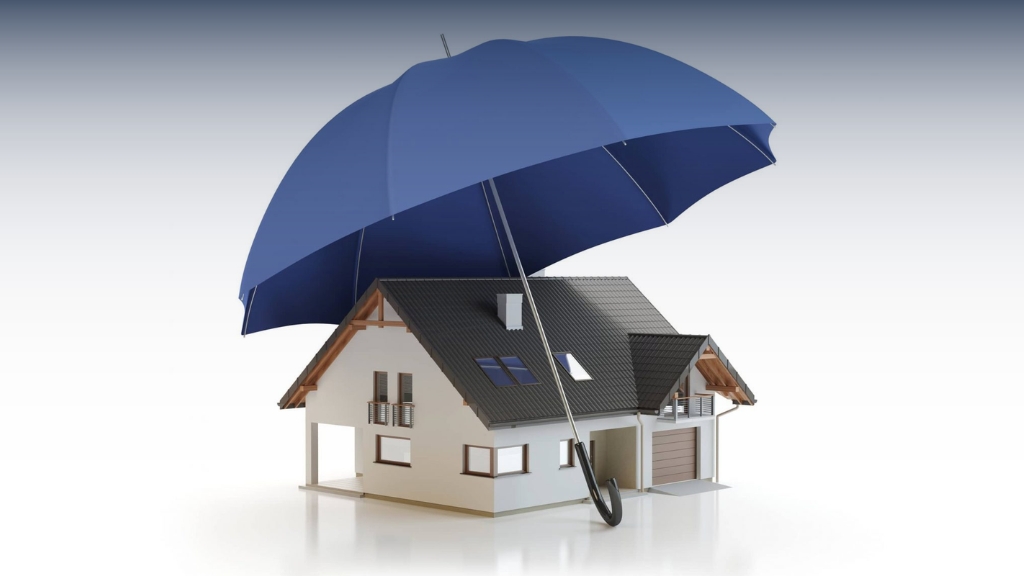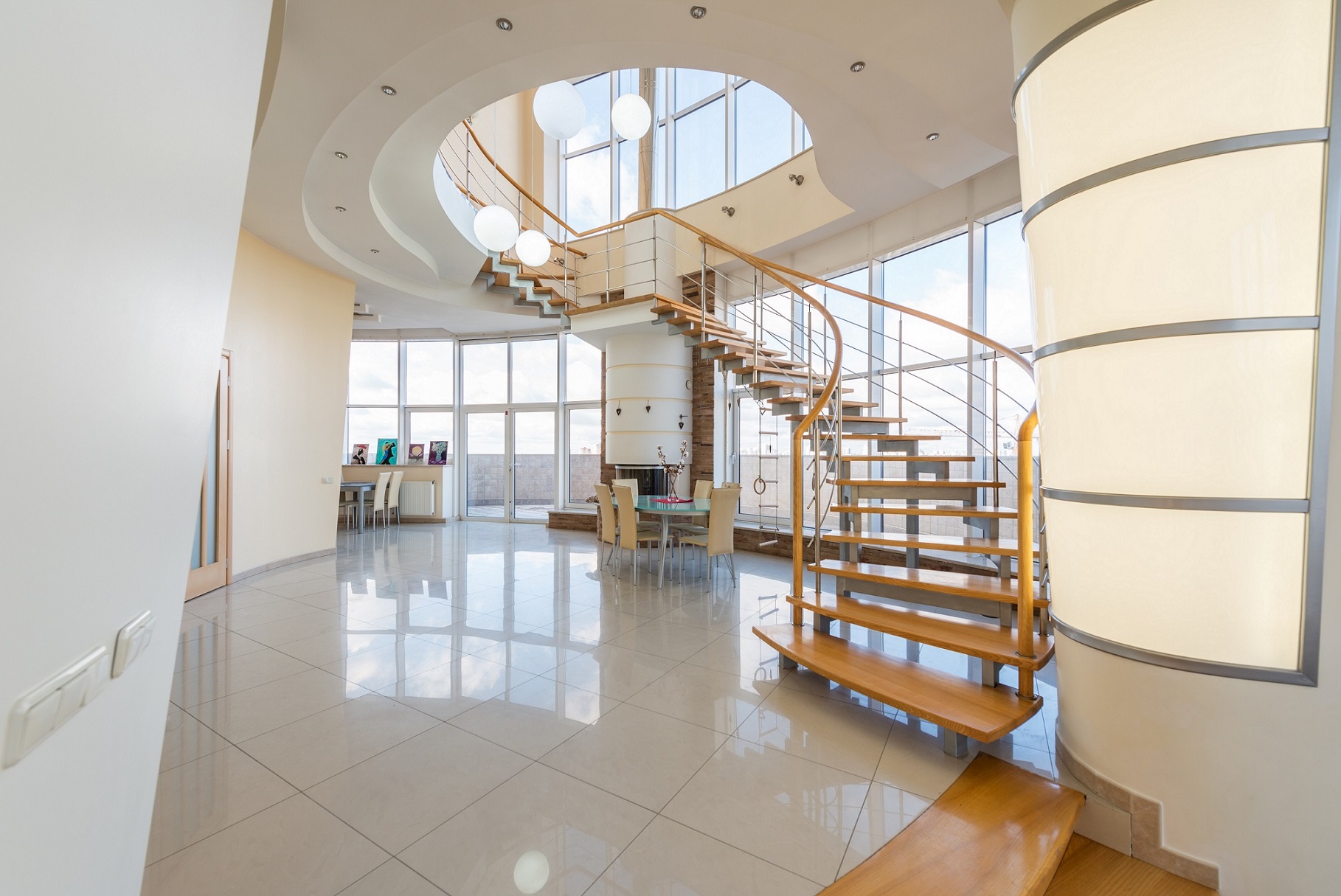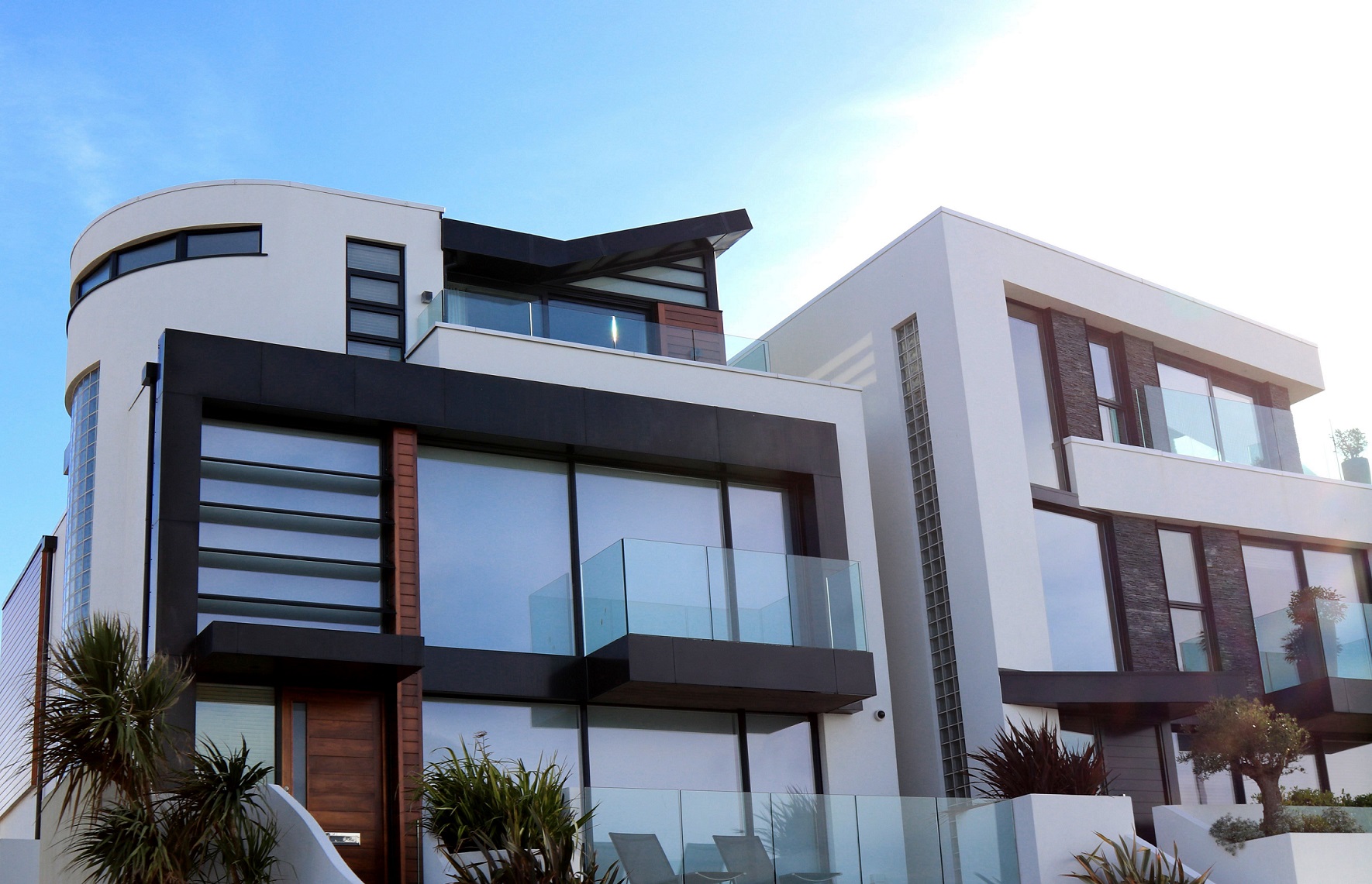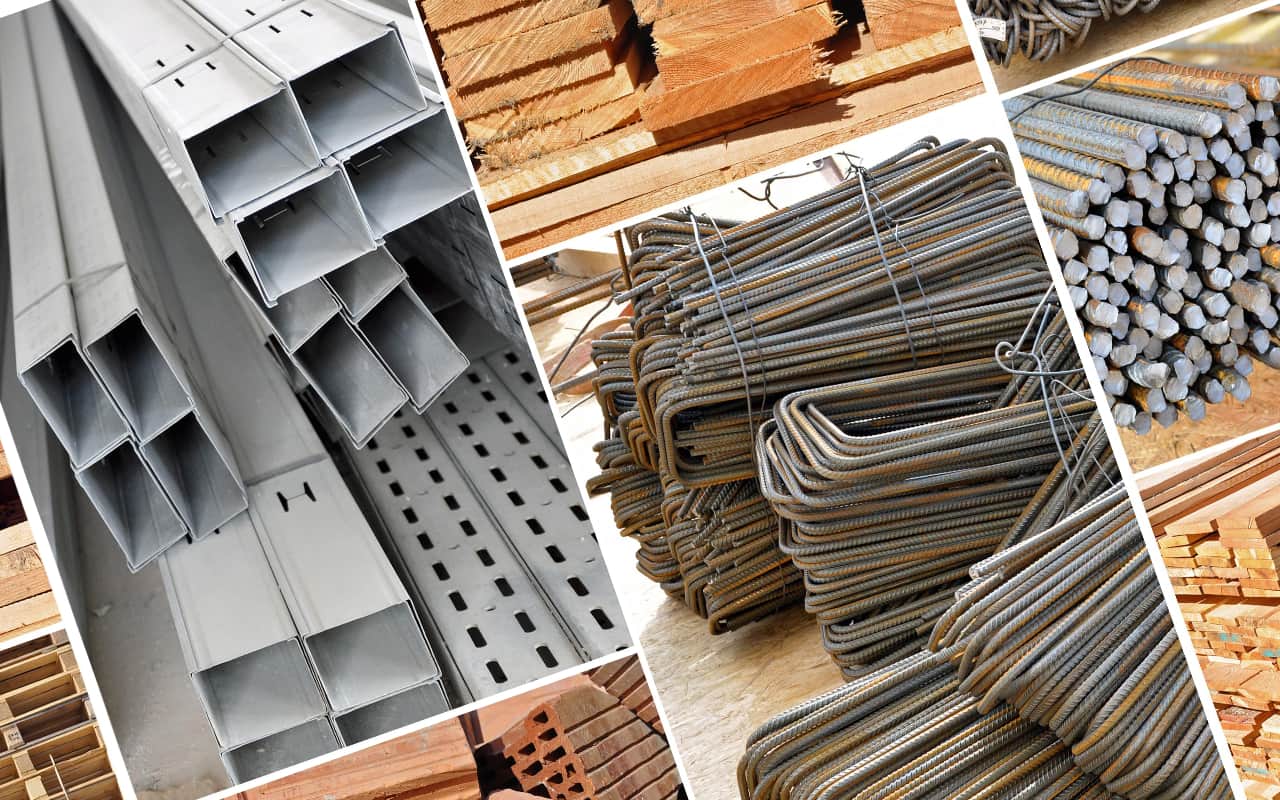We want to build homes that give aesthetic value and provide long time durability and protection to the building. But as time passes by our beautiful homes get stained and have black spots. These stains that are formed due to water seepage not spoil the elegant feel of the building, but also result in structural damage to them.
Water Seepage is one of the recurrent issues faced by most houses worldwide. Water Seepage can occur in many forms. It can occur because of a heavy downpour of rain on a poorly waterproofed terrace. Even a single pipe leakage in your water supply or a damaged overhead tank can cause seepage and wall to dampen from any corner of the home.
Most people give importance to externally protecting their buildings by using weather-protective paints. This does little help with shielding the exterior and leads to water seepage through the walls, dampness on the inner surfaces, efflorescence effect, and even the peeling of the paint.
Waterproofing Solutions should be employed in every home as India is a tropical country receiving adequate rainfall. This leads to leakages from drain systems and nearby water bodies, giving an ultimatum to the structure.
What do you mean by Water Proofing?

Waterproofing can be simply put as making the building’s structure water-resistant by increasing its resistance strength against water under extreme seepage conditions. Waterproofing assists in preventing dampness and humidity of interior surfaces of homes and destruction caused by water exposure.
But, why do I Water Proof my Building?
- Damages due to water damage occur due to molds, mildew, and fungus. These organisms survive in damp conditions. Waterproofing solutions help in providing complete protection from these damping issues.
- It prevents your home from any termites and other insects that can destroy your home from feeding on the woodwork of your home.
- Waterproof safeguards your internal walls from any structural damage.
When should I Water Proof my building?
1) Onset of Construction:
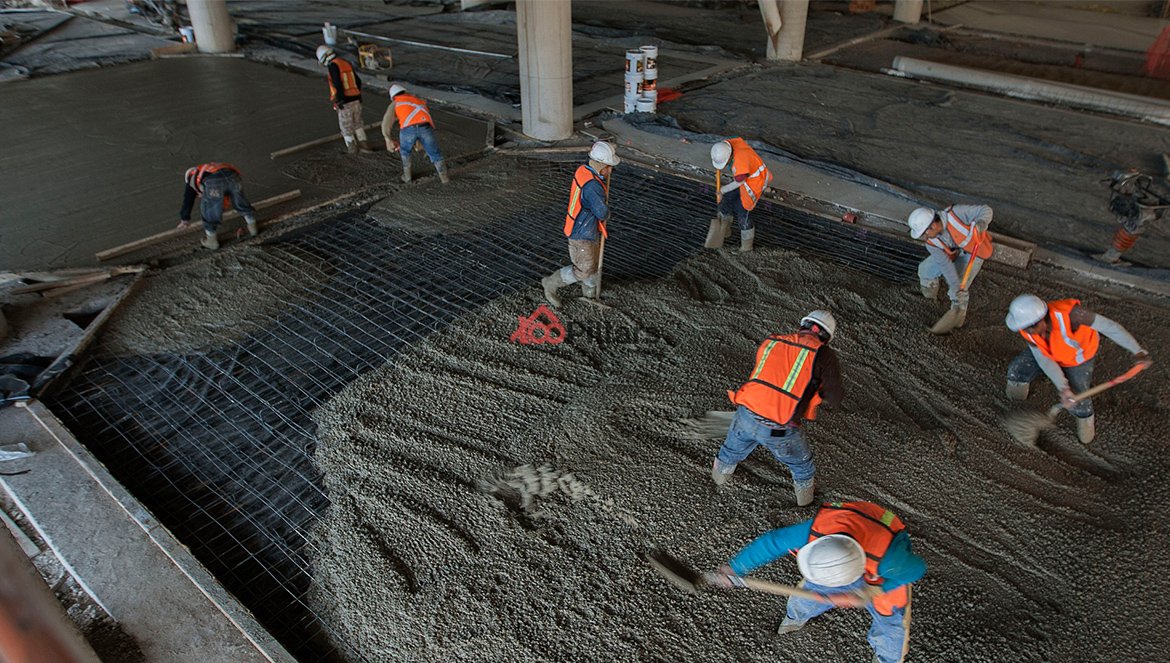
Waterproofing is considered the best option while the construction process is still in progress. During this phase, a premium quality liquid waterproofing solution consisting of sand and cement can be applied for:
-Pillars and Foundation
-Roof Slabs
-Brick and Cement Works
-Plastering &
-Basement
When it is combined in the right quantities, it prevents the separation of chemicals and forms a strong cohesive bond. 100Pillars Team always ensures in providing maximum waterproofing and leakage protection from future cracks by using premium quality products at the execution stage itself.
2) Terrace or Roof Water Proofing
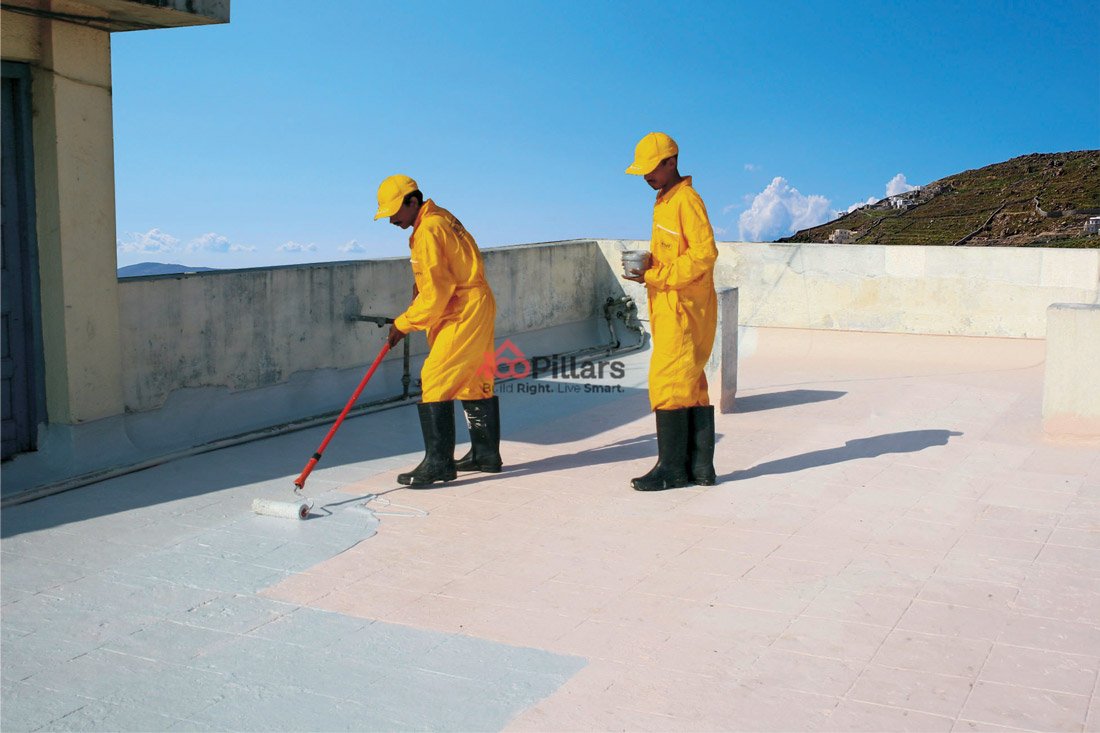
Minor cracks developed on the terrace or roof can be crucial as these cracks grow over time into larger cracks, leading to major leakage losses.
In the case of terrace waterproofing, you should first thoroughly clean the surface before applying the sealants. You should ensure to include the area surrounding air vents or pipes during the cleaning process. Even include crevices on 2 sides of the exterior and interior of the building.
3) Broken or Old Drywall Plastering
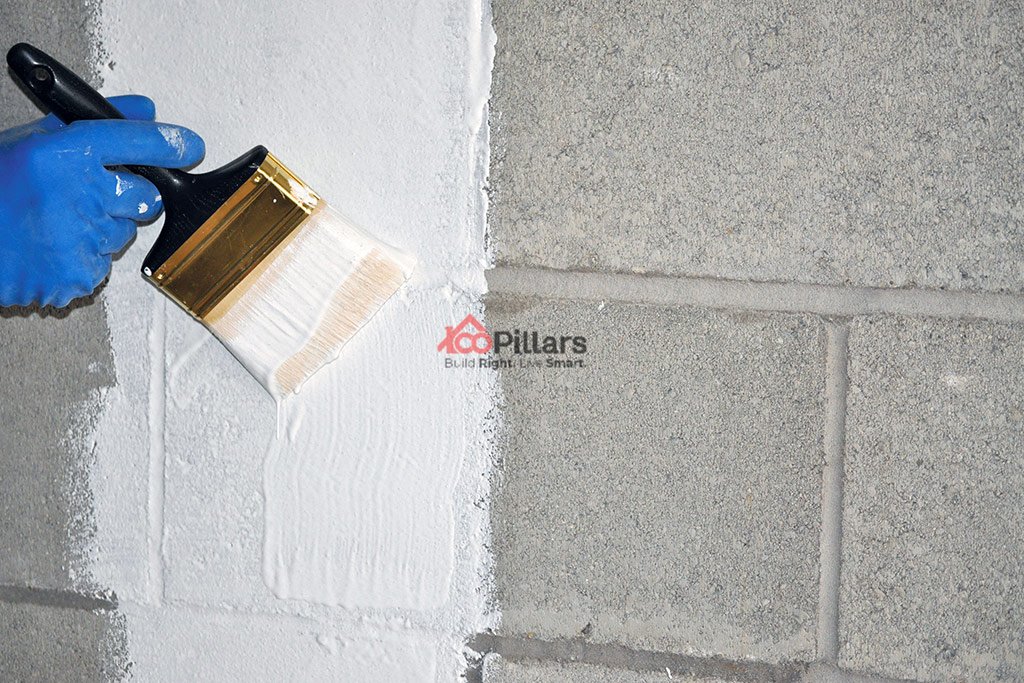
Due to extreme weather conditions, old buildings and broken plastered surfaces are more prone to dampness and moisture build-up.
Here the effective waterproofing solution is a 2-component acrylic component. You can even opt for modified mortar for repairing concrete and plastered surfaces for longer durability and guarantee.
4) Waterproofing the walls before Re-Painting the surfaces
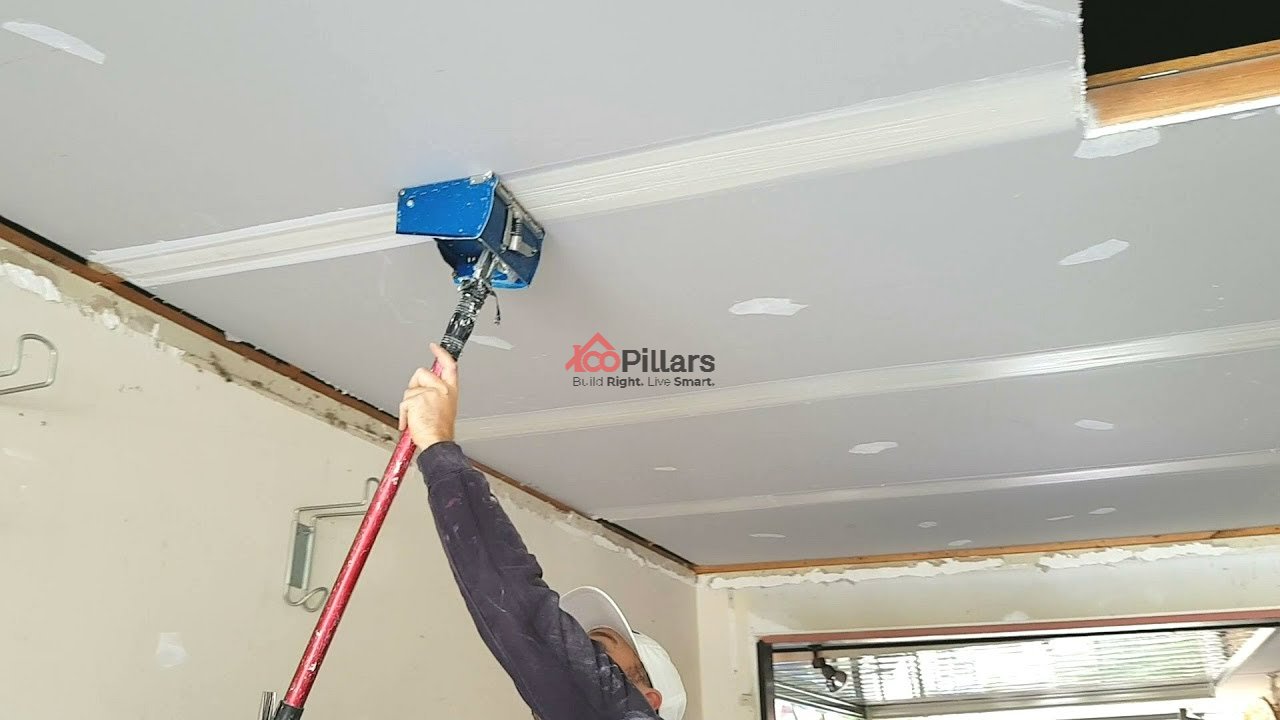
Damp patches on walls and ceilings are the first obvious water seepage. Deepwater penetration can result in long-term destruction of the internal wall paint surfaces.
But the good news is you can sort this issue by painting with waterproof, durable, flexible and weather-resistant material.
Types of WaterProofing
(a) Brickbat Waterproofing:
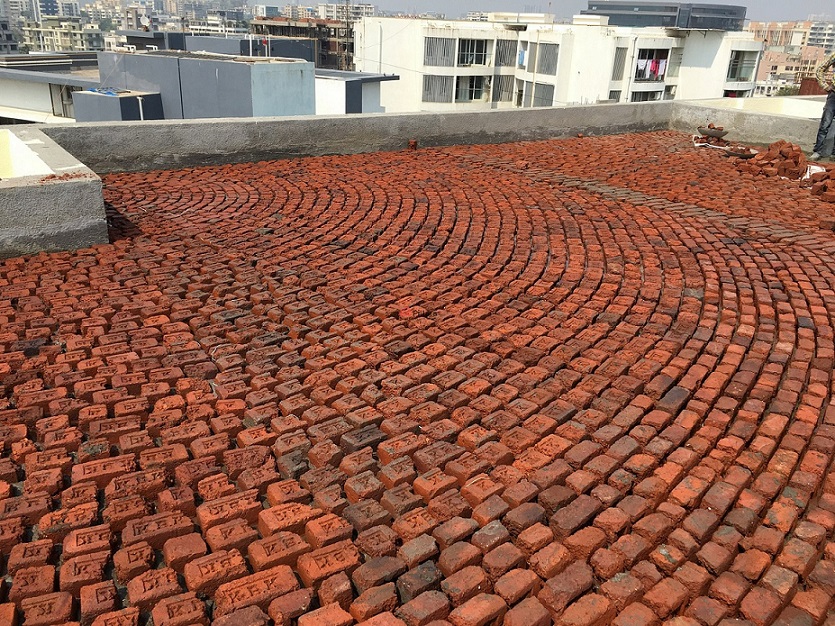
This type of waterproofing seals cracks and water leakages. It conceals untidy stains and gives aesthetic appeal with the help of China Mosaic Tiles.
Steps to brick bet waterproof your surface:
– Firstly clean the whole surface to be waterproofed and remove any debris if present
– Then apply cement, chemical and raddo of water on the surface.
– Lastly, the China mosaic tiles are placed and fixed.
(b) Poly Acrylic Chemical Coating Waterproofing:
It is the superior form of waterproofing solution. Here, the polyacrylic chemical solution helps seal the breakage and prevent any form of leakage on wall and terrace surfaces. The polyacrylic chemical acts as a strong waterproof base that protects and preserves the stability of any type of structure. This type of waterproofing requires a highly experienced team and always ensures to use of high-quality materials.
Steps to waterproof this type of surface:
– Closure of cracks using poly acrylic chemical coating
– Then finally you can apply two coats of poly acrylic and have white cement on the surface.
(c) Pre-Monsoon Roof Repairing:
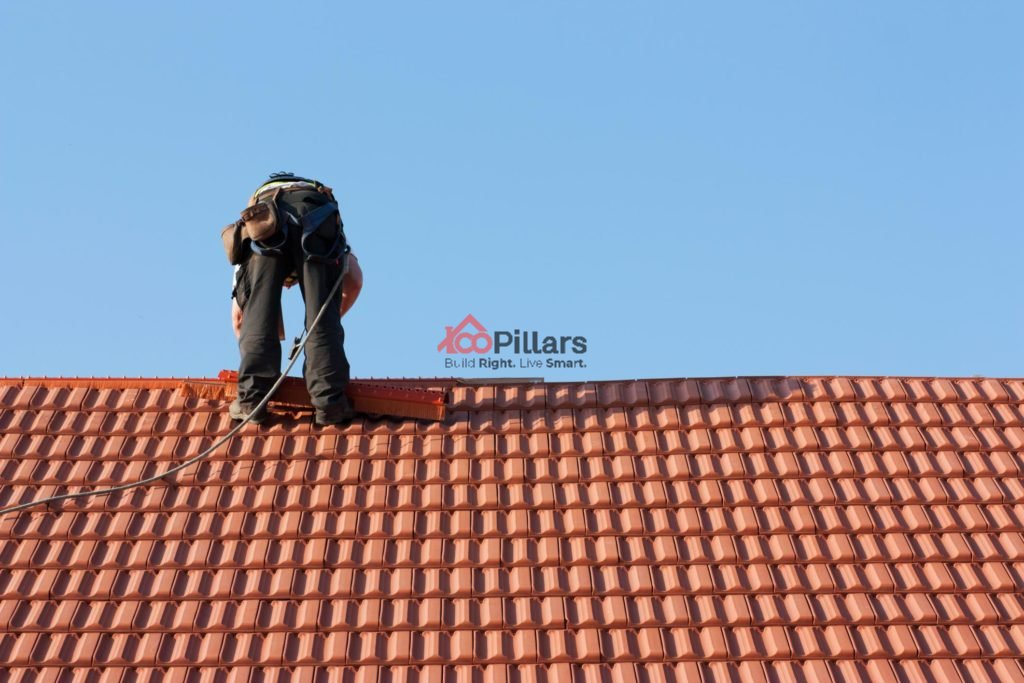
This type of waterproofing is suitable for structures that are already prone to leakages and damages or for a new building to prevent future leakages. Pre-Monsoon roof repair helps in increasing the quality and durability span of the building. The main purpose of this proofing prevents any damage to the structure caused by any rain. This method can be applied yearly.
Types of Waterproofing Materials
(a) Epoxy and Grout:
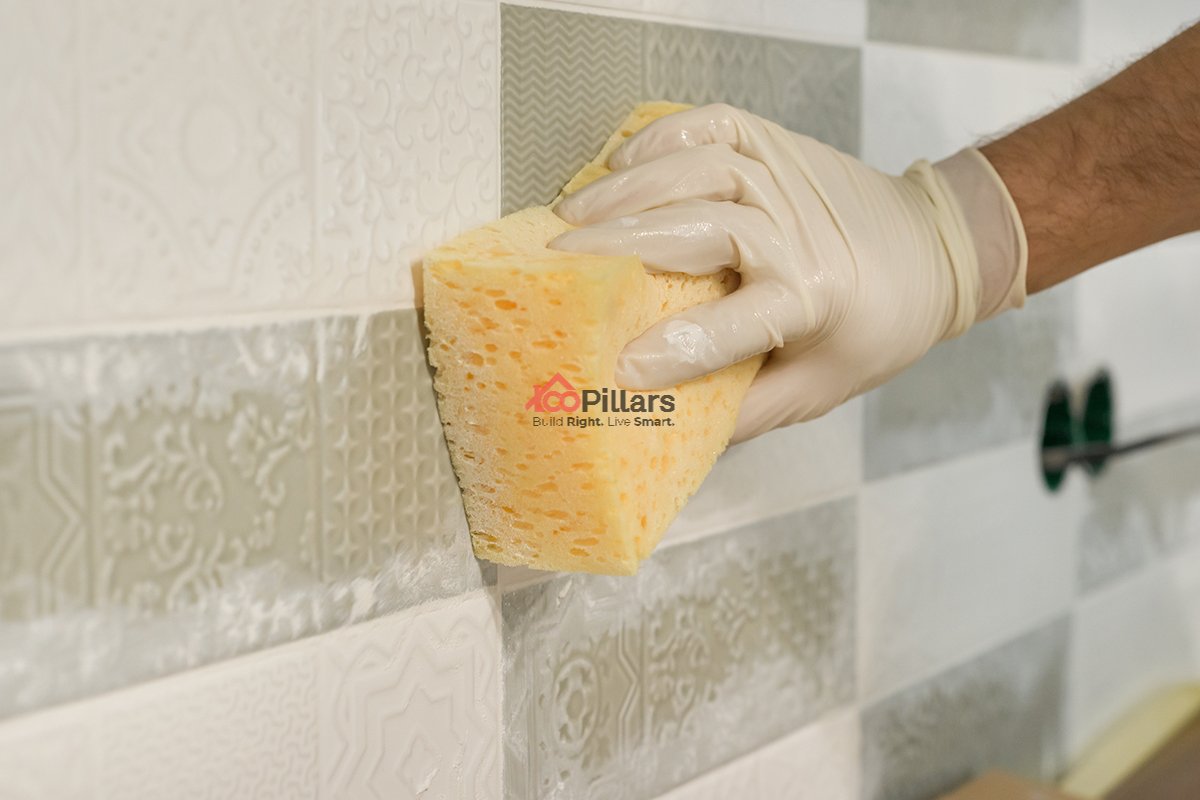
These compound forms are useful for pre-existing structures that have developed cracks. This chemical is injected into the cracked surface or holes are drilled into the surface to insert the material. After inserting the materials, a sealant is formed. The resultant sealant helps in acting as a water-resistant barrier.
(b) Vinyl Ester Resin:
It is used on concrete surfaces that prevent corrosion and acid damage. The resin formed after applying the chemical acts as a waterproof membrane that prevents further water and moisture damage.
(c )Polyurethane:
Mainly used for exposed areas and roof waterproofing. Polyurethane is also one of the costliest waterproofing chemicals available on the market.
(d) Bituminous:
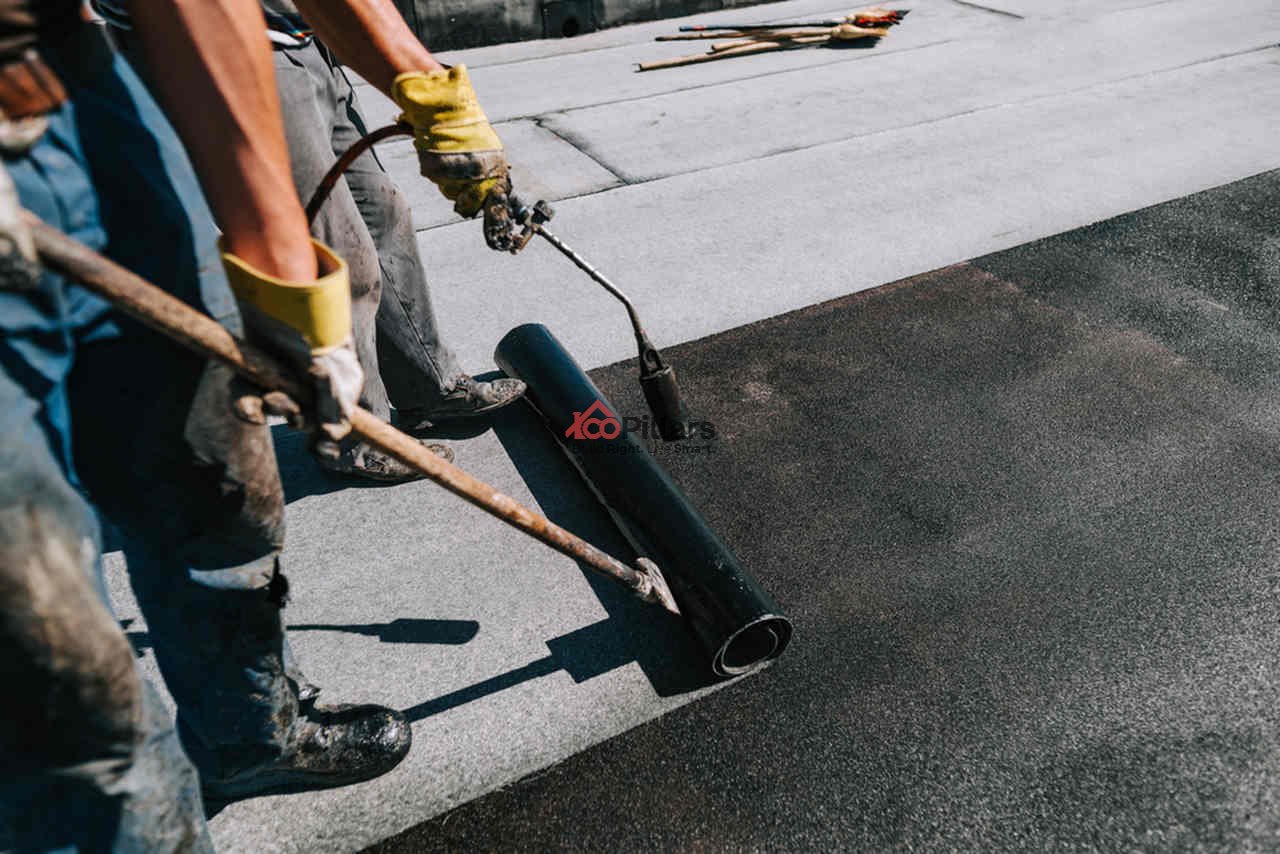
Also referred to as Asphalt coatings, Bituminous is suitable for waterproofing concrete foundations. For customizing the Bituminous waterproofing material, you can change the grade and fiber to be included in the chemical.
Final Thoughts
Waterproofing Solutions add to the aesthetic appearance and increase the durability and resale value of your building. But choosing the right type of waterproofing material as per your building condition protects your building’s structure and increases your building lifespan.
If you’re planning to build a home and looking for a skilled and experienced team of experts that can take care of both structural and aesthetic appeal, then 100Pillars Constructions is the final abode for all your residential construction needs.
To know more, visit our website 100pillars.in or call us at +91-7411724473


